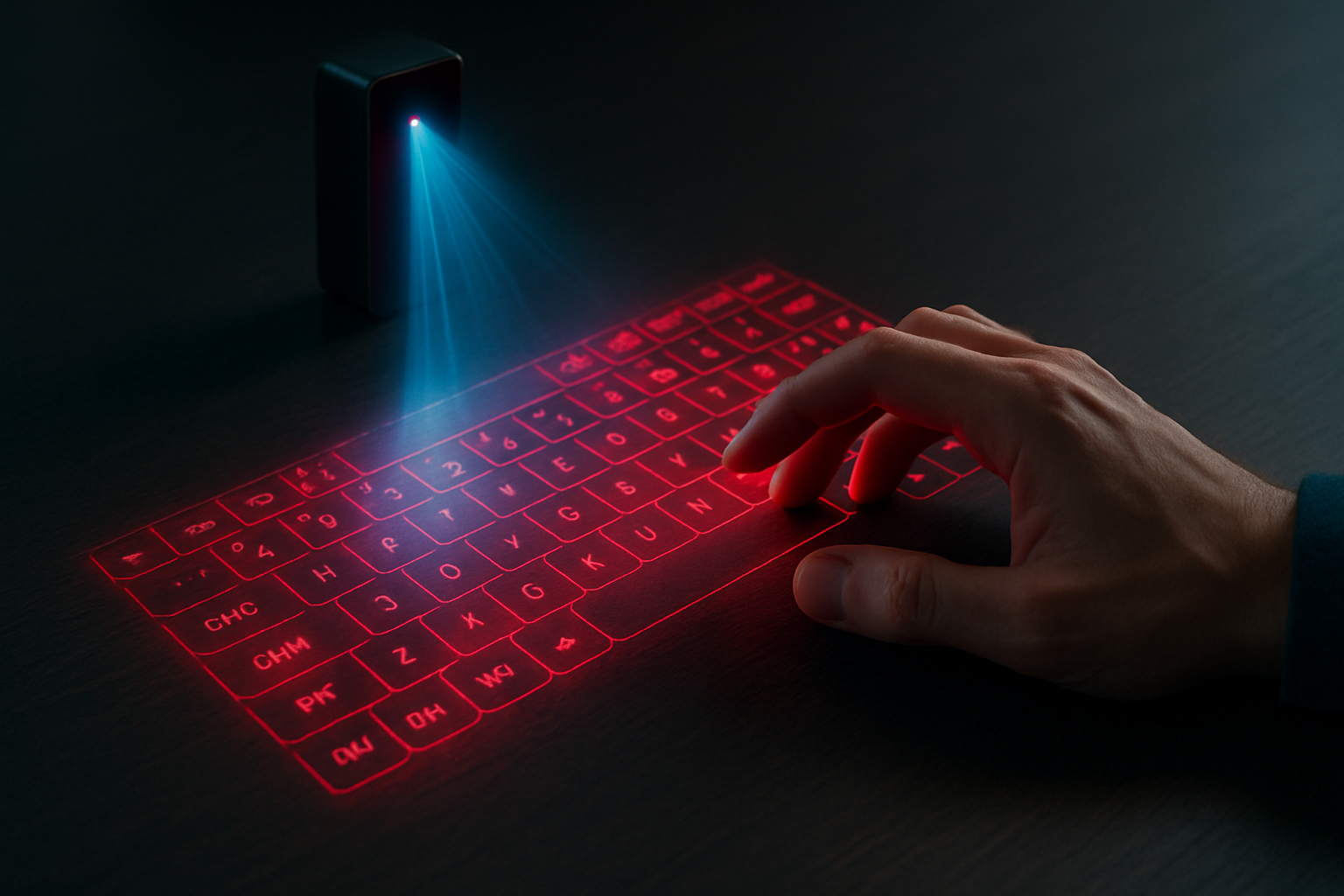Holographic Keyboards: A New Dimension in Typing
In the ever-evolving landscape of computer peripherals, a futuristic input device is stepping out of science fiction and into reality. Holographic keyboards, once relegated to the realm of imagination, are now emerging as a tangible technology poised to revolutionize how we interact with our digital devices.

A Brief History of Virtual Input
The concept of virtual keyboards isn’t entirely new. Early attempts date back to the early 2000s, with rudimentary projection systems that lacked the precision and responsiveness required for practical use. However, recent advancements in laser projection, motion sensing, and artificial intelligence have breathed new life into this technology, making holographic keyboards a viable alternative to traditional input methods.
How Holographic Keyboards Work
At the heart of holographic keyboard technology lies a sophisticated interplay of lasers, sensors, and algorithms. A compact projector emits a crisp image of a keyboard onto a surface, while infrared sensors create an invisible plane just above this projection. When a user’s fingers break this plane, the system interprets the position and movement as keystrokes.
Advantages Over Traditional Keyboards
Holographic keyboards offer several compelling advantages over their physical counterparts. Perhaps most notably, they’re incredibly portable. The entire system can be condensed into a device no larger than a smartphone, making it an ideal companion for travelers and mobile professionals. Additionally, the lack of moving parts means these keyboards are inherently more durable and resistant to damage from spills or debris.
Challenges and Limitations
Despite their futuristic appeal, holographic keyboards face several hurdles before widespread adoption. The lack of tactile feedback can be disorienting for touch typists accustomed to physical keys. Additionally, the technology’s reliance on flat surfaces and specific lighting conditions can limit its versatility in some environments. Developers are actively working to address these issues, exploring haptic feedback solutions and improving sensor accuracy in varied conditions.
The Market Landscape
As the technology matures, several companies are vying for position in this emerging market. Startups like Celluon and Serafim have already released consumer-grade holographic keyboard products, with prices ranging from $100 to $200. Meanwhile, tech giants like Apple and Google have filed patents related to holographic input devices, hinting at potential future offerings from major players in the industry.
Future Implications and Applications
The potential applications of holographic keyboard technology extend far beyond simple text input. As the technology evolves, we may see holographic interfaces used in automotive dashboards, smart home controls, and even augmented reality systems. The ability to create customizable, context-aware input surfaces could fundamentally change how we interact with technology in our daily lives.
Conclusion
Holographic keyboards represent a fascinating convergence of cutting-edge technologies, offering a glimpse into the future of human-computer interaction. While challenges remain, the potential benefits of this technology are undeniable. As development continues and prices decrease, we may soon find ourselves typing on beams of light as naturally as we do on physical keys today. The holographic keyboard is more than just a novel input device; it’s a harbinger of the increasingly blurred lines between the physical and digital worlds.





